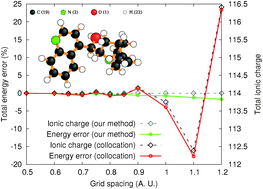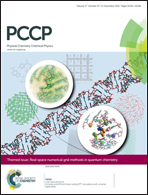Multipole-preserving quadratures for the discretization of functions in real-space electronic structure calculations
Abstract
Discretizing an analytic function on a uniform real-space grid is often done via a straightforward collocation method. This is ubiquitous in all areas of computational physics and quantum chemistry. An example in density functional theory (DFT) is given by the external potential or the pseudo-potential describing the interaction between ions and electrons. The accuracy of the collocation method used is therefore very important for the reliability of subsequent treatments like self-consistent field solutions of the electronic structure problems. By construction, the collocation method introduces numerical artifacts typical of real-space treatments, like the so-called egg-box error, which may spoil the numerical stability of the description when the real-space grid is too coarse. As the external potential is an input of the problem, even a highly precise computational treatment cannot cope this inconvenience. We present in this paper a new quadrature scheme that is able to exactly preserve the moments of a given analytic function even for large grid spacings, while reconciling with the traditional collocation method when the grid spacing is small enough. In the context of real-space electronic structure calculations, we show that this method improves considerably the stability of the results for large grid spacings, opening up the path towards reliable low-accuracy DFT calculations with a reduced number of degrees of freedom.

- This article is part of the themed collection: Real-space numerical grid methods in quantum chemistry


 Please wait while we load your content...
Please wait while we load your content...